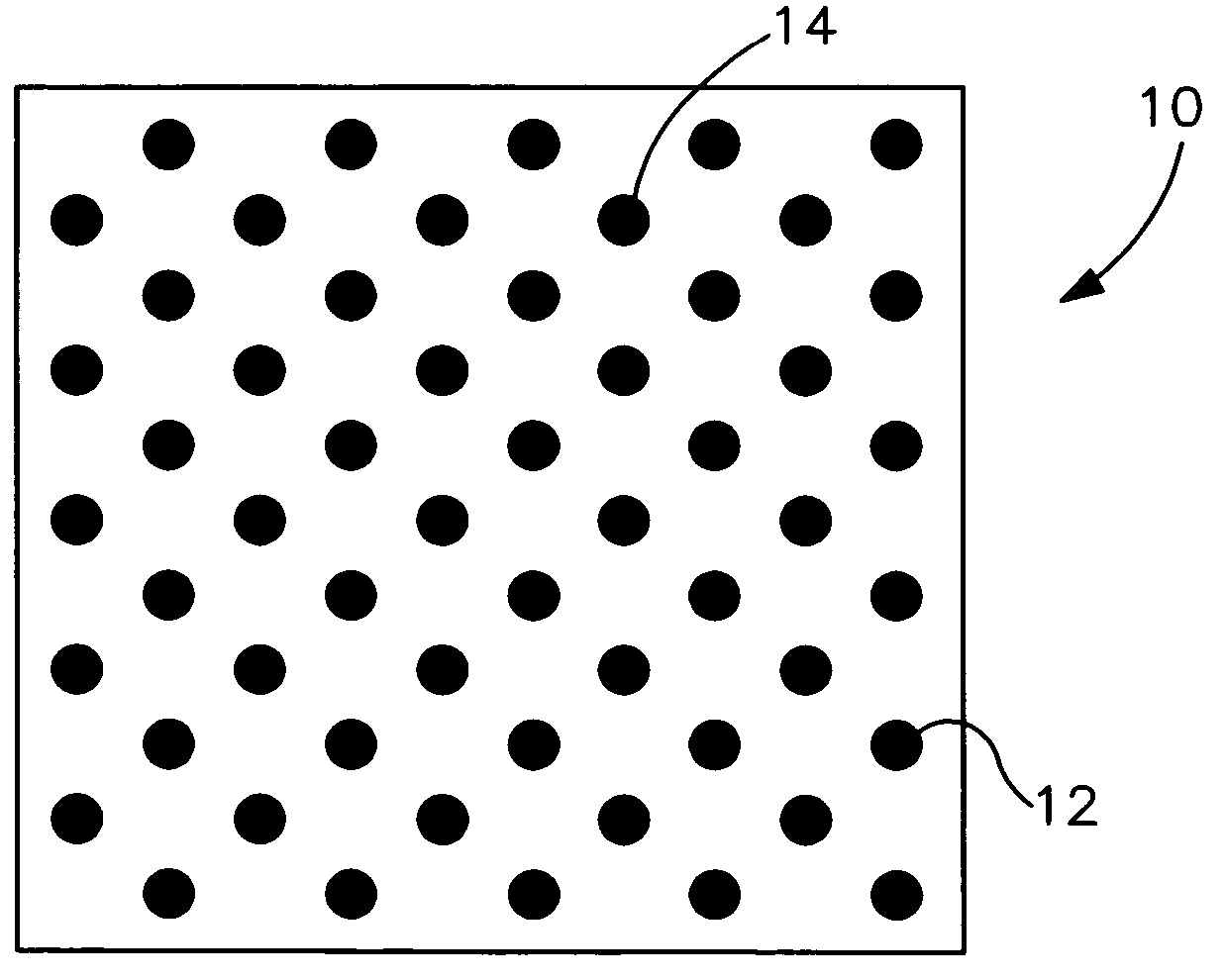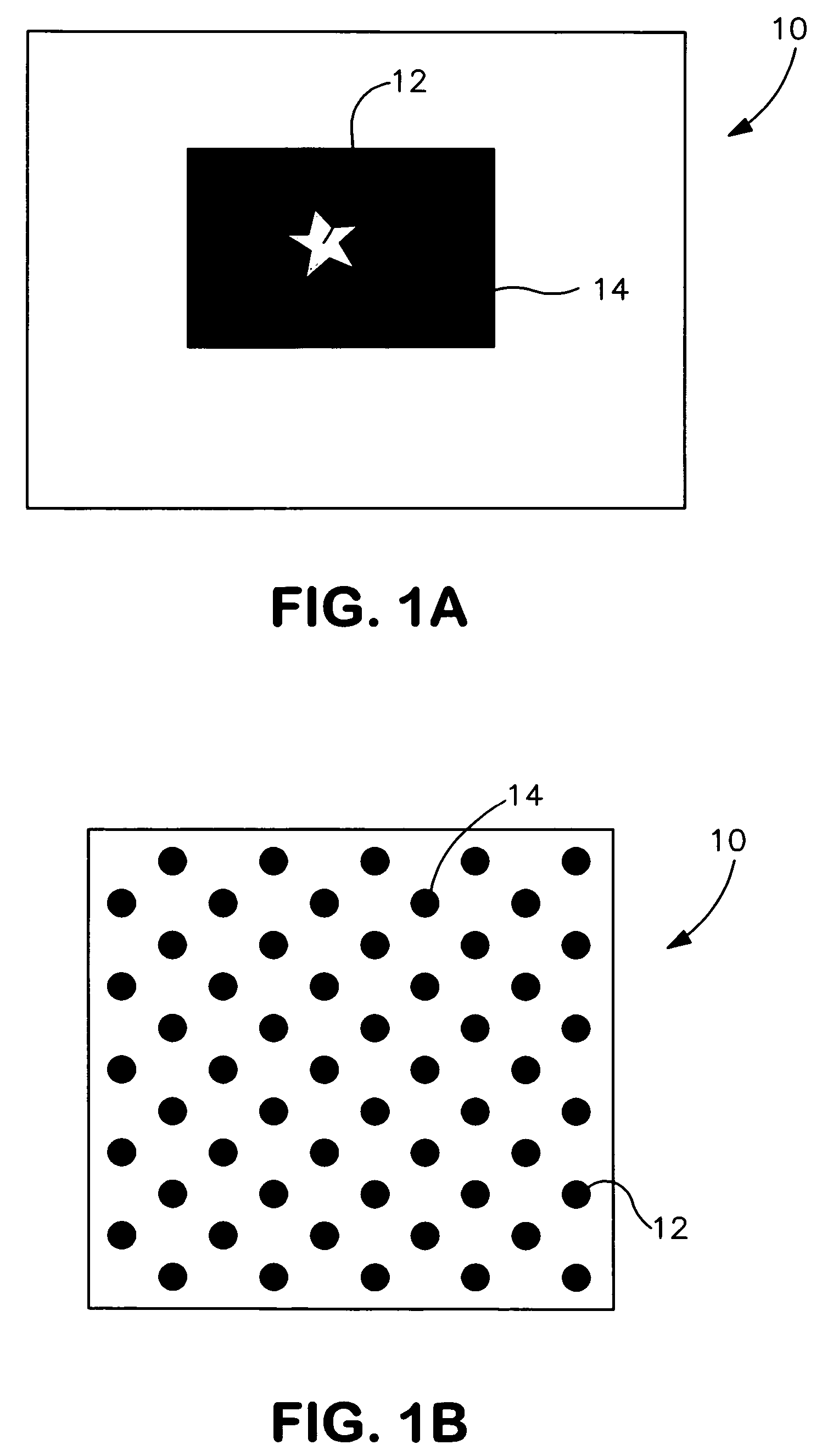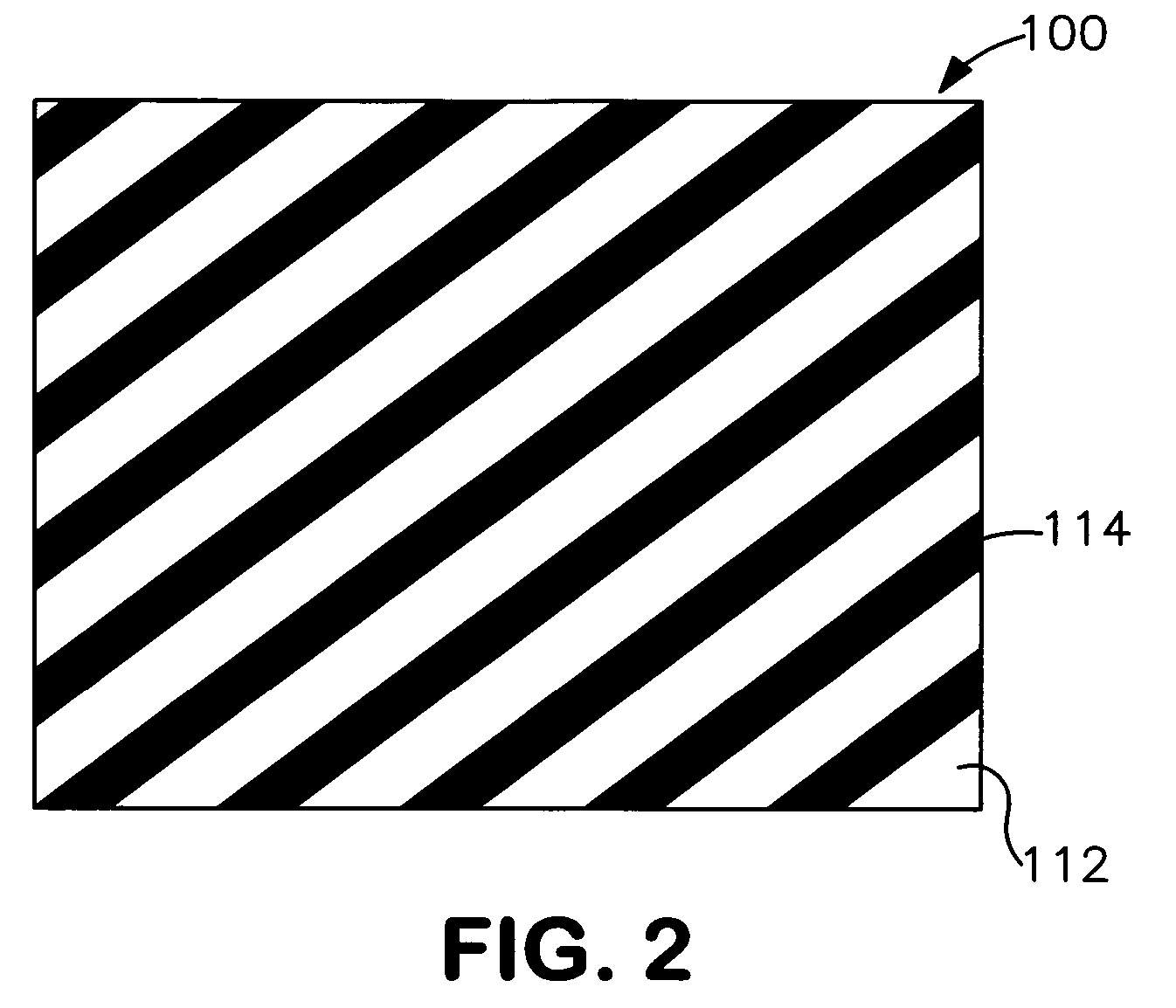Patterned application of activated carbon ink
a technology of activated carbon and ink, which is applied in the directions of dyeing process, weaving, bandages, etc., can solve the problems of limited use of activated carbon in disposable absorbent articles, and achieve the effect of improving the quality of the produ
- Summary
- Abstract
- Description
- Claims
- Application Information
AI Technical Summary
Benefits of technology
Problems solved by technology
Method used
Image
Examples
example 1
[0083]The ability to apply activated carbon ink to a substrate was demonstrated. The activated carbon ink was made by MeadWestvaco Corp. under the name “Nuchar PMA”, and contained 15 wt. % activated carbon, 12 wt. % styrene-acrylic copolymer binder, and 73 wt. % water. Flat steel rolls were used in a standard off-set gravure printing system (obtained from Faustel Inc. of Germantown, Wis.) to uniformly print the activated carbon ink onto one side of the polyethylene film. The film had a basis weight of 27.1 grams per square meter, and had been previously exposed to a corona discharge treatment as is well known in the art. After printing, the films were dried with a through-air dryer at a temperature of 190° F. for approximately 5 seconds. Seven (7) different samples were printed with the activated carbon ink in the above-described manner, each having varying coating weights and print patterns. The line speeds and coating weights (also calculated as solids add-on level) used for the a...
example 2
[0088]The ability to apply activated carbon ink to a substrate in a certain pattern was demonstrated. The activated carbon ink was made by MeadWestvaco Corp. under the name “Nuchar PMA”, and contained 15 wt. % activated carbon, 12 wt. % styrene-acrylic copolymer binder, and 73 wt. % water. Gravure steel rolls were used in a standard off-set gravure printing system (obtained from Faustel Inc. of Germantown, Wis.) to print the activated carbon ink onto one side of the polyethylene film. The film had a basis weight of 27.1 grams per square meter, and had been previously exposed to a corona discharge treatment as is well known in the art. After printing, the films were dried with a through-air dryer at a temperature of 190° F. for approximately 5 seconds.
[0089]The activated carbon ink was printed in a floral pattern on the film at various coating weights (or solids add-on levels) and patterns. Several of the samples were then tested for their ability to remove ethyl mercaptan odorous co...
PUM
| Property | Measurement | Unit |
|---|---|---|
| glass transition temperature | aaaaa | aaaaa |
| wt. % | aaaaa | aaaaa |
| wt. % | aaaaa | aaaaa |
Abstract
Description
Claims
Application Information
 Login to View More
Login to View More - R&D
- Intellectual Property
- Life Sciences
- Materials
- Tech Scout
- Unparalleled Data Quality
- Higher Quality Content
- 60% Fewer Hallucinations
Browse by: Latest US Patents, China's latest patents, Technical Efficacy Thesaurus, Application Domain, Technology Topic, Popular Technical Reports.
© 2025 PatSnap. All rights reserved.Legal|Privacy policy|Modern Slavery Act Transparency Statement|Sitemap|About US| Contact US: help@patsnap.com



